So much of 21st-century life is lived online. We research, study, plan and shop using websites. And too many of them are like old, inaccessible buildings that exclude people with disability.
We’re trying to change that.
Splice Marketing’s vision is to improve access to quality health services and health information by expanding the footprint of health businesses in Australia. That includes upskilling our team and ensuring that people with disability can access websites.
A broad and diverse population
Around 1 in 6 Australians has a disability – that’s about 18% of the population or 4.4 million people. Numbers increase with age with 50% of over-65s experiencing some form of disability.
People with disability defy stereotypes. They have a diverse range of interests, experiences and needs. Many are active, capable students or employees who contribute a great deal to their communities.
Because most disabilities are hidden, you may not realise how many of your clients have some form of disability – 1 in 6 Australians lives with hearing loss, for example.
The EnABLED Business program
Run by Spinal Life Australia, the EnABLED Business program provides:
- Disability awareness training
- One-on-one mentoring
- Connections to potential employees with disability.
The whole Splice Marketing team completed this program in 2023, including staff training and an assessment of our premises. We also began the process of reviewing our website and improving its accessibility.
Now, we’re encouraging our clients to follow suit.
How does disability affect website use?
It’s easy to understand how a building with no ramp is inaccessible to someone who uses a wheelchair. But, until you stop and think about it, it’s not always easy to realise how inaccessible a website can be.
So, take a moment and consider how you could use a website if you couldn’t:
- See the text easily or at all
- Hear the sound on videos
- Distinguish between the colours used
- Move a small cursor to navigate.
You’d find it quite difficult – even impossible – wouldn’t you?
If that happened on every website you tried to use, it would have quite an impact on your life. You wouldn’t be able to access the information you needed to make decisions, advance your studies or access services.
It’s a huge barrier – so let’s dismantle it.
Creating an accessible website
Flexibility and choice are good things. Right now, you may be reading this on your desktop, your tablet or your smartphone – and you can do that because the website has been built to enable that kind of tailored use.
Similar principles apply when creating an accessible website. The W3C Accessibility Standards set out a number of improvements that you could make.
For example, websites become more accessible when the user can:
- Read subtitles on videos
- Convert text to speak
- Change fonts and font sizes
- Change colours or contrast
- Increase the cursor size for easier navigation.
The good news is that many of those changes can be made quite easily without affecting the overall look and feel of your site.
There are now numerous tools available – and there’s one you can see in action right now on the Splice Marketing website.
On the right side of your screen, you should see an icon of a white person in a green circle. Click on it and it’ll open the UserWay tool which will allow you to adjust things like font size and colour contrast.
Have a play around. Then imagine how many more people you could reach if your website was accessible.
How can Splice Marketing improve your website’s accessibility?
We love supporting healthcare businesses to reach a wider audience and become more accessible to people with disability.
We can help you by:
- Reviewing your current website
- Making a number of changes in line with the Web Content Accessibility Guidelines (WCAG)
- Installing cost-effective tools like the UserWay plugin so that users can adjust your site to suit their needs.
Such actions help to create a better, more inclusive world by removing barriers to accessing information. They also help your business to widen its reach. That’s good for you too.
If you’d like to learn how we could help you, please book your free 30-minute consultation with Splice Marketing.
Sources
- Australian Institute of Health and Welfare, People with disability in Australia, https://www.aihw.gov.au/reports/disability/people-with-disability-in-australia/contents/people-with-disability/prevalence-of-disability, [Accessed 28 September 2023]
- Better Health Victoria, Hearing loss – how it affects people, https://www.betterhealth.vic.gov.au/health/conditionsandtreatments/hearing-loss-how-it-affects-people, [Accessed 28 September 2023]
- Spinal Life Australia, EnABLED Business program, https://www.spinal.com.au/service-types/enabled-business/, [Accessed 28 September 2023]
- Web Accessibility Initiative, W3C accessibility standards overview, https://www.w3.org/WAI/standards-guidelines/, [Accessed 28 September 2023]







